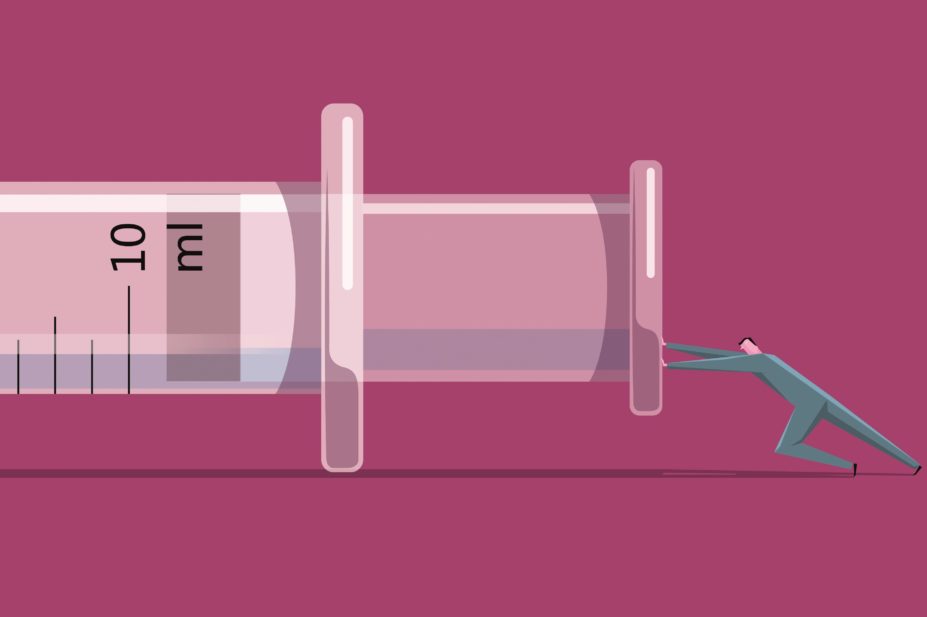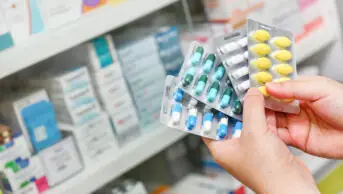
istockphoto.com
Pharmaceutical firms are undoubtedly committed to medical innovation in developing new treatments, but research suggests that the money spent on marketing surpasses investment in research and development (R&D). The surprising figures may represent a distorted relationship between the development of a drug and how it is marketed. Independent data on drug marketing costs are difficult to come by, but one study in 2008 estimated that the drug industry spent US$57.5bn in 2004 on marketing in the United States alone, nearly twice as much as was invested in R&D[1]
. Moreover, some of pharma’s marketing practices have questionable ethical standards and could potentially put patients at risk.
As legal cases related to the marketing practices of pharmaceutical firms or their agents mount, it is time to impose heavy fines and criminal sanctions to deter inappropriate marketing practices that ultimately result in patient harm and the erosion of trust in an indispensable industry.
Drug pushers
A variety of methods have been used to promote greater prescribing of newer, more expensive drugs, which typically provide little or no benefit compared with older treatments. In the United States and New Zealand, direct-to-consumer (DTC) advertising of prescription medicines is ubiquitous. Such DTC campaigns are effective but represent just a sliver of marketing efforts. For prescription-only drugs, prescribers are the primary marketing target, although patient advocacy groups, public sector payers, and private insurers are also important targets[2]
.
The marketing toolbox includes sales representative visits, sponsored medical education, free drug samples, physician-to-physician marketing, funding patient advocacy groups, and presentation of evidence in medical journal articles. Although regulatory agencies only allow marketing of drugs for approved conditions, drug firms have paid out billions of dollars in recent years to settle claims of marketing for a wide variety of unapproved indications[3]
.
In one case, a psychiatric diagnosis (“complicated mood”) was created by drug firm Eli Lilly to justify treatment of primary care patients with its antipsychotic drug olanzapine. Marketers targeted the drug to treat “symptoms and behaviours found in mood, thought and behaviour disturbances”, a much broader target than the narrow bipolar I disorder and schizophrenia indications for which the drug was approved. Internal documents detailed “complicated mood” as consisting of at least one of the following symptoms: anxiety, irritability, disruptive sleep, and minor mood swings (not bipolar I mood swings)[4],[5]
. Only one of these symptoms was needed to qualify for “complicated mood”.
Although documents from most legal settlements remain sealed, documents from several firms have either been released as part of court proceedings or leaked. These materials tell a consistent story. Initial regulatory approval gets a drug on the market for a narrow indication. Then marketers sell it for a spectrum of unapproved conditions. This has certainly been the case for many psychiatric medicines. For instance, atypical antipsychotics were originally approved as treatments for schizophrenia, then bipolar I disorder. Before long, various federal lawsuits in the United States alleged that atypical antipsychotics were promoted for treating conditions ranging from aggression, anxiety, attention deficit-hyperactivity disorder (ADHD), dementia, depression, post-traumatic stress disorder and sleeplessness. Claims regarding off-label marketing of bestselling atypical antipsychotics have been settled with US federal authorities to the tune of between US$300m and US$1.4bn, with some drug firms admitting guilt and others denying wrongdoing.
Many US states have also reached multimillion dollar settlements with drug companies for similar charges. The shady marketing of antipsychotics has been the biggest target of federal investigators compared with other drug classes, but other psychotropics have shared the spotlight. One example is a US$1.5bn US federal settlement with Abbott in 2012[6]
over its antiseizure drug divalproex (valproate semisodium), which was marketed illegally to treat schizophrenia and dementia. In addition, GlaxoSmithKline[7]
and Forest Labs[8]
both admitted to marketing their antidepressants (paroxetine and citalopram, respectively) for treating youth depression — despite evidence indicating these drugs were ineffective for such a purpose.
Peer-to-peer marketing
Although sales representatives are highly influential, many doctors view them with at least some scepticism. Enter peer-to-peer marketing — paying prescribers to market to their peers. While the content is often developed in large part or in whole by sponsoring drug companies (or firms that are paid by them), material emanating from doctors feels more independent and credible than information from the sales force. These doctor “educators” are referred to as key opinion leaders (KOLs) and their involvement in drug sales is heavily emphasised in both internal documents and publicly available pharmaceutical industry publications.
For instance, as the campaign to push olanzapine to primary care doctors was about to launch, the brand manager for olanzapine enthused at a national sales meeting that Lilly had primary care physicians “who are chomping at the bit to help you sell Zyprexa”[9]
.
Several years ago, stories of relatively low-level KOLs enticed to extol the virtues of a drug to peers in their local area emerged[10]
. High-level KOLs are much more important, appearing as authors on clinical trials and review papers in medical journals. In many cases, these KOLs have little to no involvement in the study design or analysis of data[11],[12]
.
Furthermore, manuscript drafts have been known to be developed by hired medical writers. Thus, KOLs often appear to lend an appearance of external oversight in the presentation of data[13]
. These high-level KOLs shape perceptions about mental health, often referring to the scourge of various untreated disorders. They engage in “disease awareness” campaigns, such as the surge in media coverage regarding binge eating disorder, a condition recognised by the American Psychiatric Association in 2013. Lisdexamfetamine — a stimulant approved originally for ADHD — has recently become the first drug approved for binge eating disorder by the US Food and Drug Administration[14]
. In the only published clinical trial of lisdexamfetamine so far, binge eating episodes were cut by 78% from the start to the end of the first published clinical trial among people taking a sugar pill[15]
. Although the drug resulted in even greater reductions in binge eating, it did not improve overall mental health.
Little deterrent
The vast majority of relevant legal cases have occurred in the United States. Yet drug marketing is a global business. In many countries, some form of industry self-policing is in place while, in the United States, legal action may be pursued by state officials or the federal government regarding drug promotion. At first glance, fines of over US$13bn for off-label promotion in the United States over the past few years sound like a powerful deterrent. However, the drug industry consistently maintains among the highest profit margins of any industry. For instance, when Eli Lilly paid US$1.4bn and pled guilty to criminal charges in settling claims of olanzapine’s off-label marketing, this was a trivial expense in the context of a drug netting around US$50bn in sales during its patent-protected lifespan. In much of Europe, including the UK and Sweden, regulatory agencies have largely delegated oversight of drug promotion to the drug industry.
A recent analysis found these self-regulatory groups noted around one case per week in each country that violated industry standards of conduct, with about one case per month in each country being serious[16]
. Financial punishment was toothless, accounting for 0.0051% and 0.014% of annual sales revenue in the UK and Sweden, respectively.
Pharma now relies on emerging markets for around 30% of sales, and bribery is sometimes one of its tools. An investigation by news agency Reuters in 2012 found that eight of the top ten drug companies in the world informed investors of costs related to corruption charges in such markets[17]
. In China, GlaxoSmithKline was recently hit with a nearly US$500m fine for bribing doctors to prescribe its products[18]
.
Punishment must fit the crime
Pharmaceutical companies already pay fines if they are found to be in breach of the law when they inappropriately market their drugs, but these fines must be heavy enough to deter them from reoffending. Also, there should be increased criminal prosecution of senior pharma company executives who condone or turn a blind eye to such practices.
Whether any meaningful reforms will occur is an open question, but it is in the public interest that we move quickly toward true evidence-based medicine through careful reforms of the current broken system.
Glen I Spielmans is an associate professor of psychology at Metropolitan State University and an adjunct associate research professor of counselling psychology at the University of Wisconsin-Madison.
Declaration: Glen I Spielmans is a shareholder in Vanguard Health Care, a mutual fund that invests in pharmaceutical firms.
References
[1] Gagnon MA, Lexchin J. The cost of pushing pills: a new estimate of pharmaceutical promotion expenditures in the United States. PLoS Med 2008;5:e1.
[2] Eli Lilly. Key player playbook .
[3] Groeger L. Big pharma’s big fines. ProPublica 2014.
[4] Spielmans GI. The promotion of olanzapine in primary care: an examination of internal industry documents. Soc. Sci. Med. 2009;69:14–20.
[5] Applbaum K. Getting to yes: corporate power and the creation of a psychopharmaceutical blockbuster. Cult. Med. Psychiatry 2009;33:185–215.
[6] US Department of Justice. Abbott Labs to pay $1.5 billion to resolve criminal and civil investigations of off-label promotion of Depakote. 7 May 2012.
[7] US Department of Justice. GlaxoSmithKline to plead guilty and pay $3 billion to resolve fraud allegations and failure to report safety data. 2 July 2012.
[8] US Department of Justice. Drug maker Forest pleads guilty; to pay more than $313 million to resolve criminal charges and False Claims Act allegations. 15 September 2010.
[9] Bandick M. Zyprexa primary care presentation. 2001.
[10] Carlat D. Dr. drug rep. The New York Times. 25 November 2007.
[11] BBC. Panorama: Secrets of the drugs trials. 2007.
[12] Ross JS, Hill KP, Egilman DS et al. Guest authorship and ghostwriting in publications related to rofecoxib: a case study of industry documents from rofecoxib litigation. JAMA J. Am. Med. Assoc. 2008;299:1800–1812.
[13] Sismondo S. Corporate disguises in medical science dodging the interest repertoire. Bull. Sci. Technol. Soc. 2011;31:482–492.
[14] Thomas K. Shire, maker of binge-eating drug Vyvanse, first marketed the disease. New York Times. 24 February 2015.
[15] McElroy SL, Hudson JI, Mitchell JE et al. Efficacy and safety of lisdexamfetamine for treatment of adults with moderate to severe binge-eating disorder: a randomized clinical trial. JAMA Psychiatry 2015;72:235–246.
[16] Zetterqvist AV, Merlo J & Mulinari S. Complaints, complainants, and rulings regarding drug promotion in the United Kingdom and Sweden 2004–2012: a quantitative and qualitative study of pharmaceutical industry self-regulation. PLoS Med 2015;12:e1001785.
[17] Vasovic A & Hirschler B. A prescription for corruption. Reuters. 28 February 2012.
[18] Pl umridge H & Burkitt L. GlaxoSmithKline found guilty of bribery in China. Wall Street Journal. 19 September 2014.


